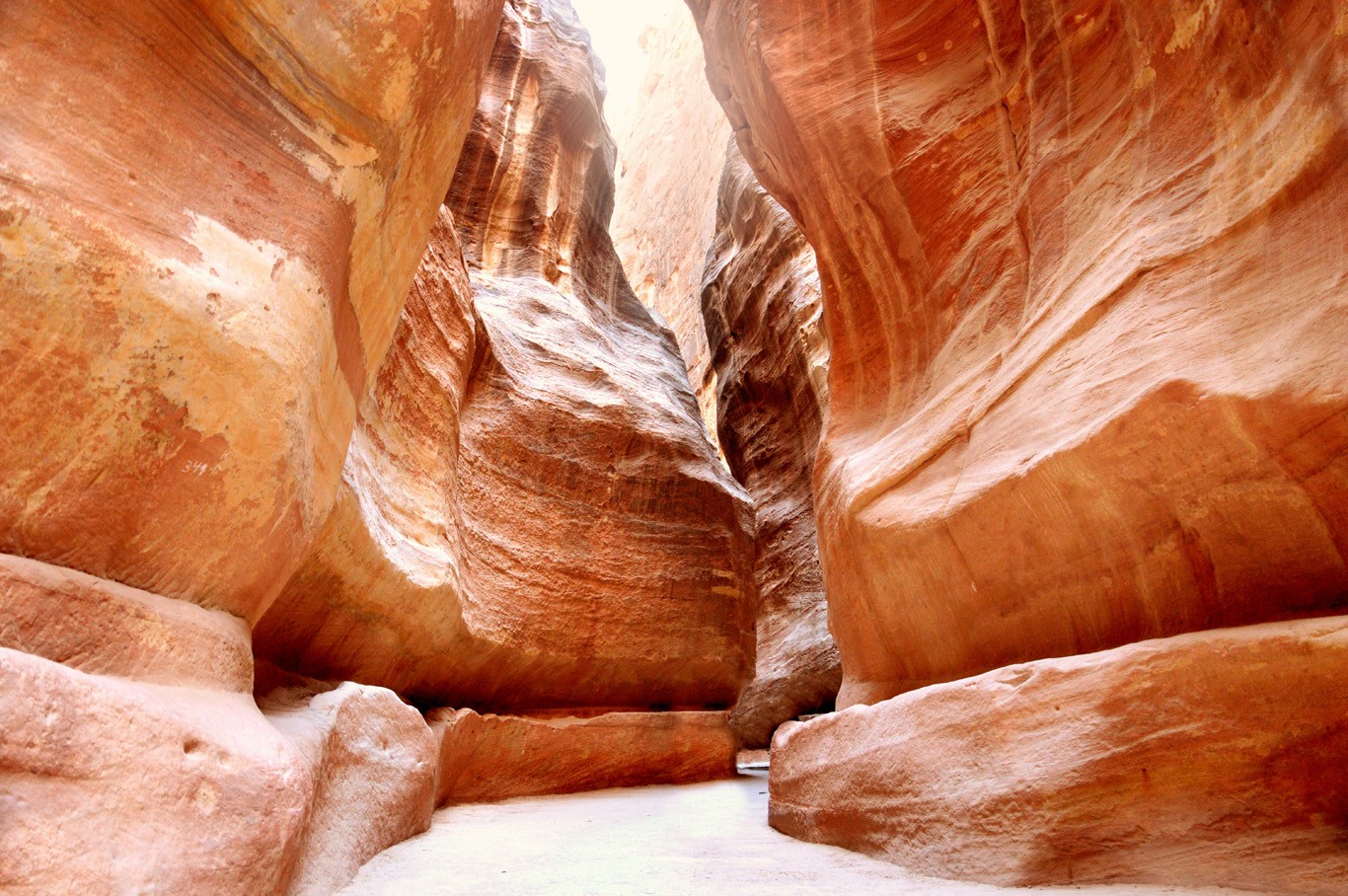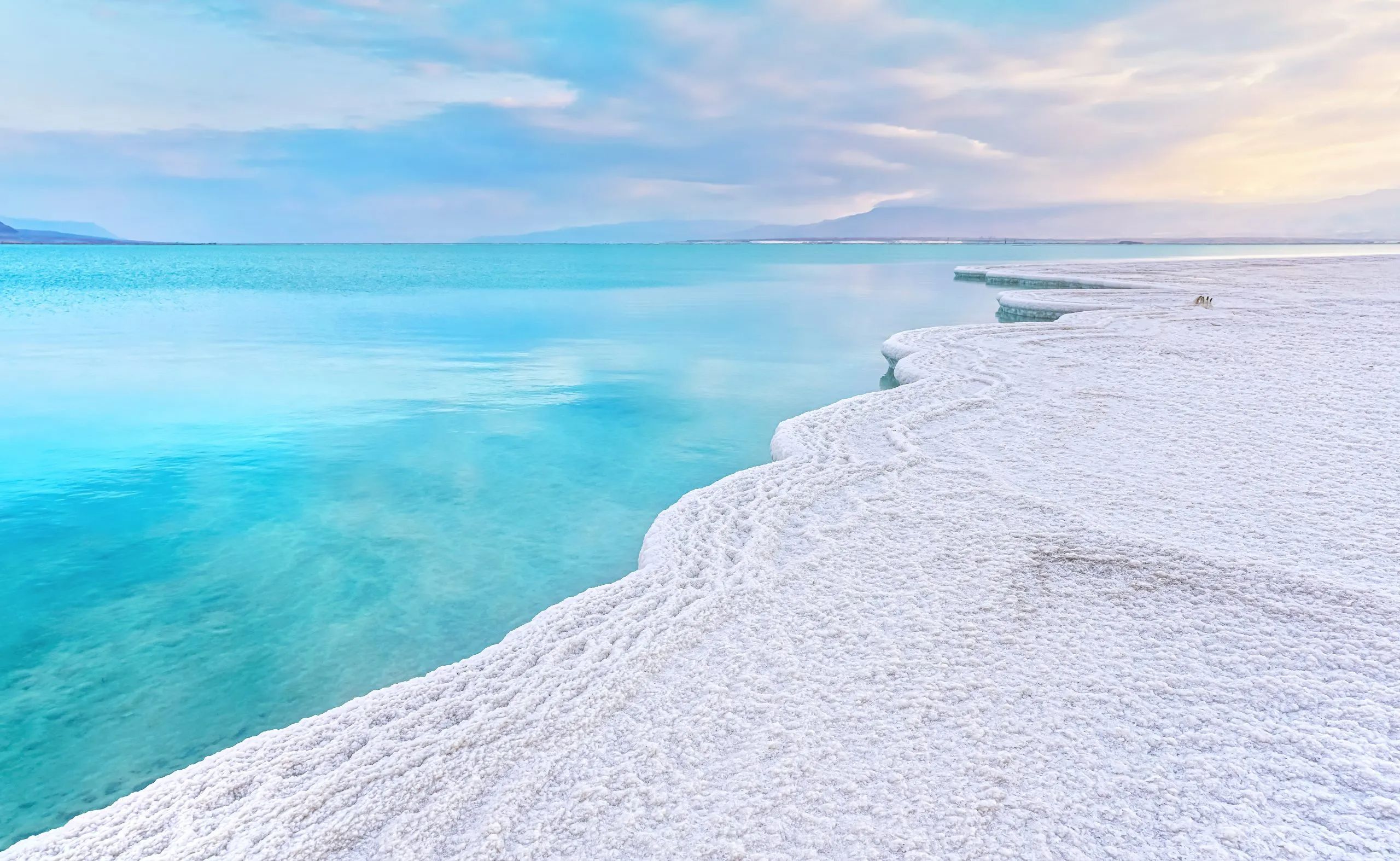Jordan, located in the heart of the Middle East, feels at once expansive and small – as though nothing seems too far away, yet the stretches of sand and glittering stars appear infinite. So much appears to have happened here, and the Stone Age petroglyphs and ammonite fossils bear witness to that.

To pay Jordan a visit is to take a trip back in time. From ancient cities to extraordinary natural wonders, the country is a treasure trove of sights and experiences.
Crossroads of Ancient Civilizations
Once hidden by time and shifting sand, Petra weaves a story of a lost civilization. Little is known about the Nabataeans, nomadic desert dwellers whose kingdom arose from sandstone cliffs and its rosy peaks. Before they were conquered and absorbed into the Roman Empire, the Nabataeans monopolized the trade of spice, silk, and incense through the Middle East.
The journey to the UNESCO World Heritage Site of Petra begins with the Siq, an 80-meter-tall limestone gorge in varying shades of red and pink, whose path was hand-chiselled through by the Nabataeans.
The walk through the gorge is an experience in itself. It winds and twists, occasionally tapering and widening to display further evidence of the Nabataean occupation in its sandstone sculptures and pottery pipes carved into the rock face. Little over a kilometer in, the Siq dramatically opens up to reveal the towering colonnaded Treasury – the work of the Romans when they took Petra over in 63 BC.

Carved into the dusty red rock, with workers carving from the top down, the iconic structures of Petra, Treasury and Monastery, have distinct Hellenistic features and ornate Corinthian columns, signalling the new era of architecture and occupation in the ancient city.
While a visit to Petra is unmissable, Jordan is by no means a one-trick pony. The capital is also home to an impressive archaeological site, The Amman Citadel, where a single hill showcases the city’s occupation of several great civilizations – from most notably the Roman, Byzantine, and Umayyad periods.
A quick drive out of Amman will bring travellers to Jerash, where one of the world’s largest and most well-preserved Roman ruins resides. It is here where visitors may stroll along column-flanked boulevards once roamed by Alexander the Great.
Treasures of Nature
Equally worthy of a visit are the wind-chiselled sandstone formations and rippled sand dunes of one of Jordan’s most dramatic landscapes. Wadi Rum, also known to many as the Valley of the Moon, is an extraordinary stretch of red-rock desert.

It is, therefore, unsurprising that it has been consistently selected as the backdrop of numerous Hollywood blockbusters, from The Martian to Lawrence of Arabia, to the more recent Aladdin.
Half-day four-wheel drive tours can give you a taste of the spectacular desert, but setting some time aside for a hike in the sand and camping under the stars will make for a richer experience.
Finally, no visit to the Hashemite Kingdom is complete without making a trip 430m below sea level, to the lowest point of land on earth. The Dead Sea, a landlocked salt lake in the Middle East, boasts of a unique cocktail of minerals, which many believe to efficiently moisturize the skin and relieve muscle aches and joint tensions.

Planning a visit to the salt lake at the end of your vacation is the best way to bookend the trip. For a touch of luxury, it is worthwhile to spend a night or two at Kempinski Hotel Ishtar, where hotel guests will gain access to a private strip of the lake equipped with the accessories necessary for a rejuvenating dip.